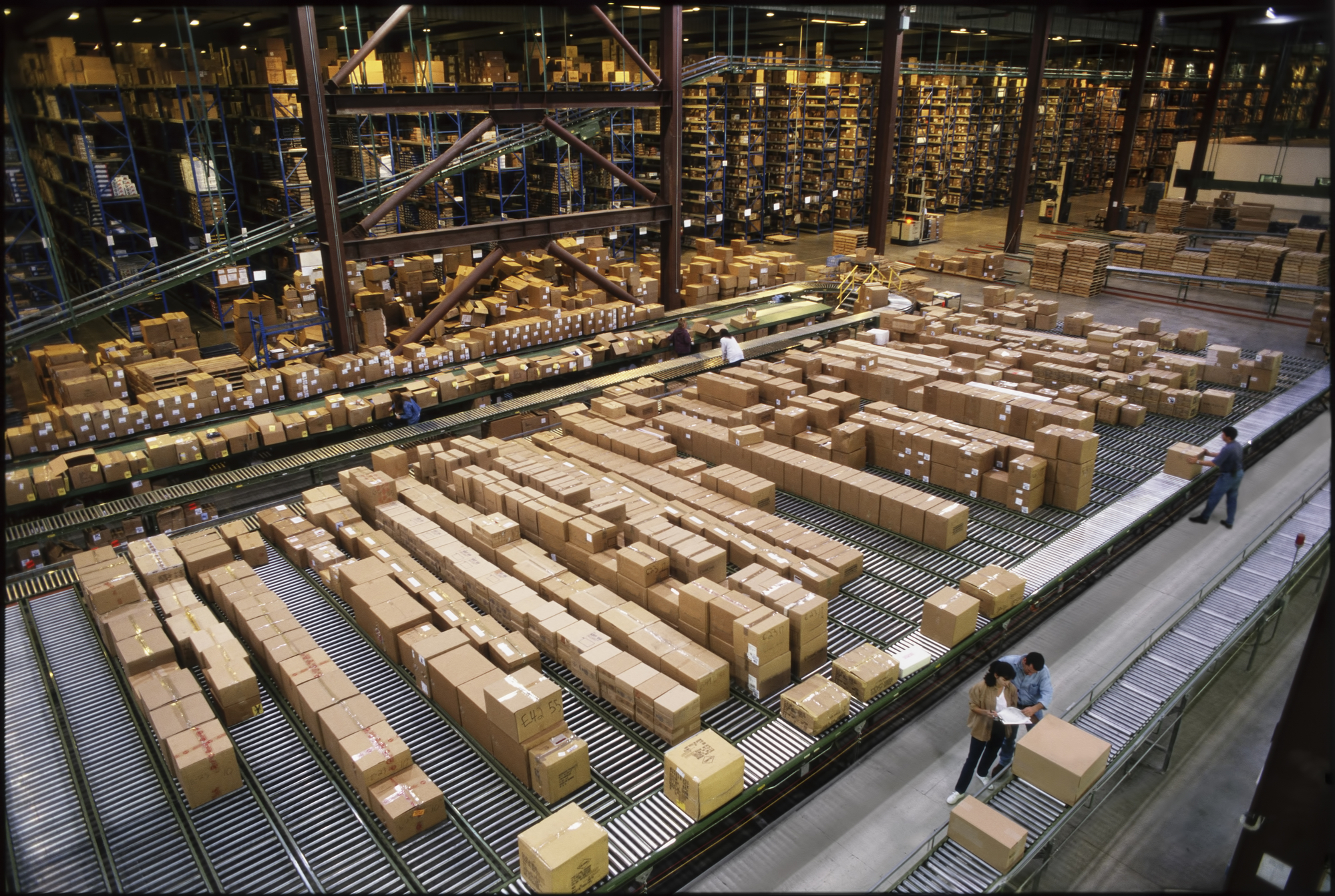Top 5 High-Tech Supply Chain Challenges and How to Overcome Them
The high-tech industry is rapidly evolving, driven by technological advancements and shifting consumer demands. As companies strive to stay competitive, they face several trends and challenges that require innovative solutions. Here, we explore the five biggest trends and challenges in the high-tech industry and how Blue Yonder’s solutions can help overcome them.
1. Demand Volatility and Forecasting Complexity
The shift to cloud-based environments and the rise of XaaS models are significantly complicating demand forecasting. In 2024, the XaaS global market size reached $328 billion and is expected to grow at a CAGR of 15.4% as more companies adopt these services over traditional on-premises IT infrastructure. By 2033, the global market is expected to reach $1,192.6 billion.
The transition to cloud-based infrastructure and XaaS gives companies increased scalability and flexibility, but it also introduces volatility, as changes in one area can ripple through the entire system. Paired with increasingly unpredictable consumer behavior, driven by factors like social media trends, rapid product cycles and promotional activities; it’s become more difficult to anticipate demand accurately.
Inaccurate forecasts lead to either excess inventory or stockouts, causing increased costs, an abundance of stock that cannot be sold, lost sales and customer dissatisfaction.
Efficient inventory turnover is crucial in the fast-paced high-tech industry. To remain competitive, original equipment manufacturers (OEMs) must adapt by embracing advanced forecasting technologies and strategies that incorporate real-time data, AI and advanced analytics to improve accuracy in today’s dynamic market.
2. Rising Supply Costs and Geopolitical Issues
The high-tech OEM landscape is facing a perfect storm. Political instability, unpredictable weather patterns and cutthroat competition for critical parts are all contributing to the escalating cost of goods. Add to this the complexity of advanced chip design, prone to low yields and recalls, and the volatility of global tensions and tariffs, and you have a recipe for supply chain mayhem.
The recent chip shortage, a stark reminder of supply chain fragility, is a ghost that continues to haunt the industry. While production has somewhat stabilized, new threats loom. Export restrictions on key materials from China such as gallium and germanium, and a critical shortage of skilled engineers threaten to reignite supply disruptions. According to the SIA, the industry is projected to grow by more than 115,000 jobs by 2030, with 67,000 jobs at risk of being unfilled.
In response, OEMs are rethinking their strategies. In a survey of more than 1,000 executives at companies with U.S. operations, 94% are planning a direct investment in nearshoring or onshoring, aiming to regain control and build resilient supply chains. However, location is only part of the solution.
A truly agile and integrated supply chain is paramount. Siloed departments are obsolete; real-time data, AI-powered forecasting and the ability to pivot rapidly are essential. Demand and supply planning must be tightly linked to optimize manufacturing capacity and maximize returns on investment, creating an environment where OEMs anticipate disruptions rather than reacting to them.
3. Short Product Lifecycles and Rapid Innovation
Rapid technological innovation is shrinking product lifecycles to mere blinks. Companies have to churn out groundbreaking products with unprecedented agility to seize market share and meet the insatiable appetites of today’s consumers.
The quest for efficiency often leads manufacturers to adopt the “pearl chain” model. This approach aims to create an optimal production sequence, maximizing resource utilization and ensuring a consistent, predictable production plan. Once “frozen,” the pearl chain provides a seemingly foolproof schedule.
However, demand spikes, rush orders and unexpected supply chain disruptions can shatter even the most meticulously planned pearl chain. This rigidity, designed for stability, becomes a liability in a world defined by constant change. Instead, companies need agile and flexible supply chains. This means:
- Embracing flexibility: moving away from rigid, linear models and adopting dynamic, adaptable systems that can respond to real-time changes
- Investing in real-time visibility: gaining complete transparency across the supply chain, enabling quick identification and resolution of potential disruptions
- Leveraging data and artificial intelligence (AI): utilizing advanced analytics and artificial intelligence to forecast demand, optimize production schedules and make informed decisions
- Building strong supplier relationships: fostering collaborative partnerships with suppliers to ensure responsiveness and flexibility
Rapid innovation may also increase the need for modular design, which allows for configuring and adapting products for faster iterations and customization.
4. Sustainability and Circular Supply Chains
Companies are increasingly looking to refurbish and repurpose products to reduce waste and meet ambitious sustainability goals.
Circularity, the concept of keeping resources in use for as long as possible, is rapidly becoming a key focus. This shift is significantly accelerated by increasingly stringent government recycling and reuse targets and legislation such as “right to repair” legislation, which mandates that technology manufacturers provide consumers with the tools, parts and information necessary to repair their devices and extend product lifecycles.
This trend is also being driven by consumer demand, as our latest survey reveals that 78% of consumers consider sustainability considerations as important when choosing to buy a product or shop at a retailer. More importantly, nearly 65% are willing to spend more money on sustainable products, and 62% would favor a retailer offering more sustainable delivery options.
While the demand for sustainability is clear, implementing circular supply chains presents a significant challenge. Achieving true circularity requires unparalleled visibility and collaboration across the entire supply chain. This is crucial to ensure efficient resource use and minimize waste. Companies must invest in technologies and processes that enable them to track materials, optimize product lifecycles, and facilitate the return and reuse of products.
What’s more, this strategy must also be strategically integrated with broader corporate ESG goals, requiring supply chain planners to balance environmental responsibility with fiscal prudence and robust corporate governance. This holistic approach ensures that sustainability initiatives are not only environmentally sound but also contribute to long-term business value.
5. Integration and Visibility Across Supply Chains
The high-tech industry is a complex n-tier supply chain ecosystem, that frequently outsources to Contract Manufacturers (CMs) and Electronics Manufacturing Service (EMS) providers. This creates a web of dependencies that demands meticulous planning and seamless collaboration to ensure the consistent flow of raw materials and component parts needed for final product assembly.
Visibility into stock levels across all suppliers within the n-tier structure is vital. This enables companies to proactively address potential supply gaps arising from demand spikes or supplier disruptions. Without this visibility, companies can face a cascade of inefficiencies and inflated costs, potentially causing production lines to grind to a halt, leading to costly delays and lost revenue.
To overcome these challenges, high-tech companies must implement supply chain management systems that provide end-to-end visibility, foster closer relationships with suppliers and CM/EMS partners, and leverage data analytics to anticipate and mitigate potential disruptions. By bridging the visibility gap and fostering seamless collaboration, companies can transform their n-tier supply chains from a liability into a strategic advantage.
Stay ahead and react faster than the market with Blue Yonder
Blue Yonder has helped companies in the high-tech industry reduce planning effort by 30%, increase forecast accuracy by 15% and achieve a 200-basis point increase in profit margins.
Enable agility, speed and efficiency with:
- AI-powered demand and supply planning. Our AI-driven platform delivers real-time insights and predictive analytics, enabling you to optimize demand forecasting and supply planning, minimizing stockouts and excess inventory.
- End-to-end supply chain visibility. Gain complete control with industry-leading multi-tier supplier visibility, allowing you to respond swiftly to disruptions and optimize costs across your entire network.
- Agile inventory management: Align product delivery with evolving lifecycles, supporting rapid innovation and reducing waste through flexible and responsive inventory management.
- Sustainability and circular supply chains. Facilitate the recapture and repurposing of older equipment with our returns solutions, driving circular supply chain practices and achieving your sustainability goals.
- Integrated business planning. Break down silos with a unified approach to planning and execution, enhancing collaboration and efficiency across all supply chain functions.
Ready to turn disruption into opportunity? Find out more about how Blue Yonder can guide your journey in supply chain excellence here.




